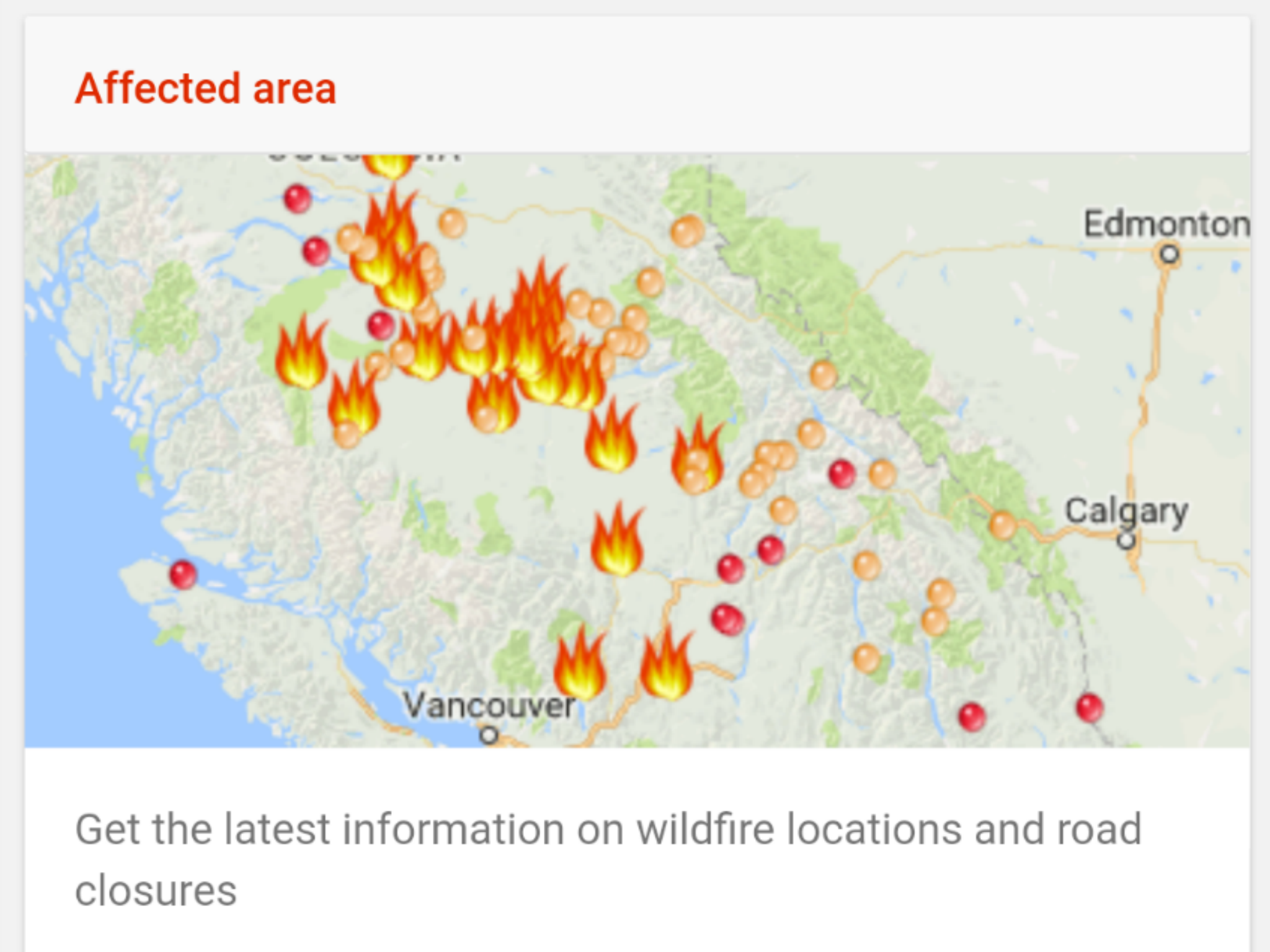Google SOS Alerts help keep users safe during a disaster
'Technology plays a vital role in providing information to help keep you and loved ones safe and informed'

Your support helps us to tell the story
From reproductive rights to climate change to Big Tech, The Independent is on the ground when the story is developing. Whether it's investigating the financials of Elon Musk's pro-Trump PAC or producing our latest documentary, 'The A Word', which shines a light on the American women fighting for reproductive rights, we know how important it is to parse out the facts from the messaging.
At such a critical moment in US history, we need reporters on the ground. Your donation allows us to keep sending journalists to speak to both sides of the story.
The Independent is trusted by Americans across the entire political spectrum. And unlike many other quality news outlets, we choose not to lock Americans out of our reporting and analysis with paywalls. We believe quality journalism should be available to everyone, paid for by those who can afford it.
Your support makes all the difference.Google has added a number of emergency features to Maps and Search.
SOS Alerts have been developed with the aim of delivering important updates to users during major disasters.
These include maps, news reports, emergency phone numbers and translations of local phrases.
The company says “major natural, manmade, or humanitarian disasters” will activate the alerts, but it “can’t guarantee that you’ll see an SOS Alert for every major crisis”.
Facebook has been criticised in the past for a perceived lack of consistency with its own emergency tool, Safety Check.
It has also been accused of spreading fear unnecessarily.
In Maps, Google's SOS Alerts will tell you what’s going on in the area, warn you about road closures and point you towards emergency resources, such as helpful numbers and websites.
In Search, SOS Alerts will offer different levels of detail, depending on how close you are to the incident.
If you’re nearby, it may display a banner notifying you of the ongoing crisis and displaying emergency information and resources.
If you have the latest version of the Google app and have your location turned on, you may also receive a notification on your phone’s home screen.
If you’re not in the immediate vicinity of the disaster, you won’t get a notification but will be able to access SOS Alerts by searching for information about the incident.
Similarly, instead of seeing an emergency phone number, Google may instead show you a link to make a donation.
“In times of crisis, access to timely, actionable information is crucial. Working alongside trained responders and volunteers on the ground, technology plays a vital role in providing information to help keep you and loved ones safe and informed,” said Google.
“We have teams around the world who source content from government agencies, first responders, trusted media outlets, and NGOs. We also aggregate information from other Google products and services, such as Google News, Google Maps, Waze, and more.”
Join our commenting forum
Join thought-provoking conversations, follow other Independent readers and see their replies
Comments